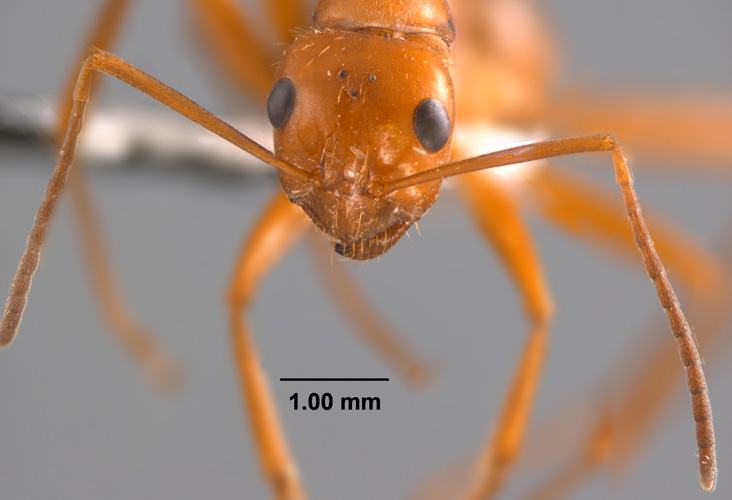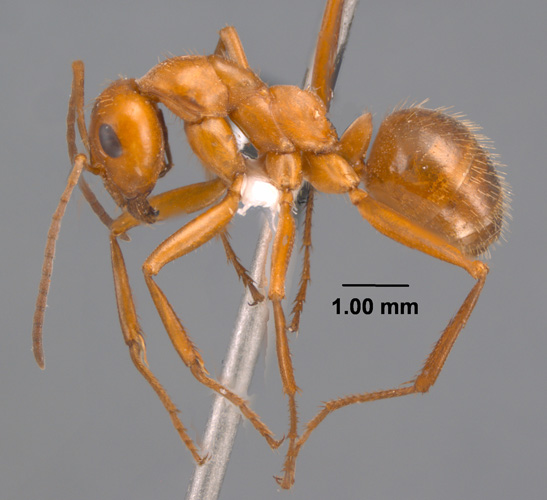Subfamily FORMICINAE Tribe FORMICINI Formica dolosa Buren |
Formica dolosa, frontal view of the head of a worker (click image to enlarge). |
Formica dolosa, side view of a worker (click image to enlarge). |
Formica dolosa, is in the pallidefulva group, and like the other species in the group it has relatively long antennae and legs. This species is the largest, most pilose, most densely pubescent, and least shiny of the similarly colored species in the group. Typically, workers are weakly bicolored with the head, alitrunk, and appendages light orangish-red to yellowish or reddish-brown, and the gaster usually slightly darker than the head and alitrunk. The alitrunk dorsum has abundant erect pilosity and pubescence (pubescence especially abundant on propodeal dorsum). The gaster has abundant long, straight to slightly curved macrochaetae and relatively long, dense pubescence, which dull the surface texture. The most similar looking species to F. dolosa in our area is F. biophilica, which differs by being much more shiny, with much less pubenscence on the body (especially the gaster), having slightly longer and more flexuous macrochaetae, and having a smaller overall size. Formica archboldi is dark reddish-brown in color, has more sculpture on the body, and appears to be limited to scrub habitats. The other common reddish species in our area, F. pallidefulva, is very shiny, lacks or has only a few erect hairs on the alitrunk, and it typically found in more mesic forests. This species typically nests in fairly dry soils, as opposed to mesic soils, in a variety of habitats including glades, prairies, or open pine or mixed forests. Formica dolosa is a common species in both Alabama and Mississippi. In Mississippi I have found this species as host of the slavemaking ant, Polyergus lucidus longicornis M. R. Smith. Links |




